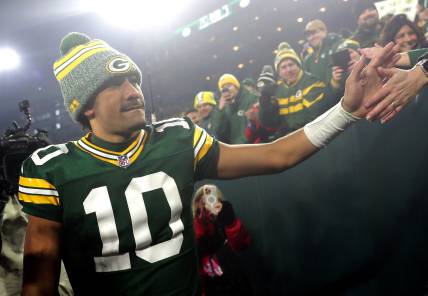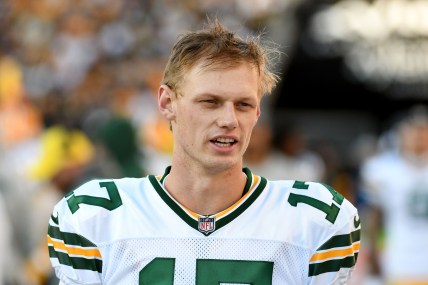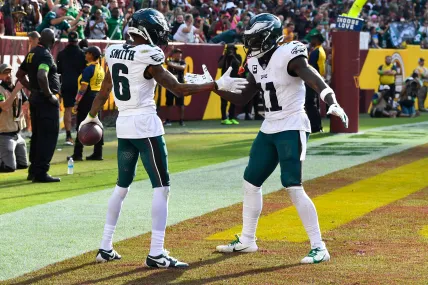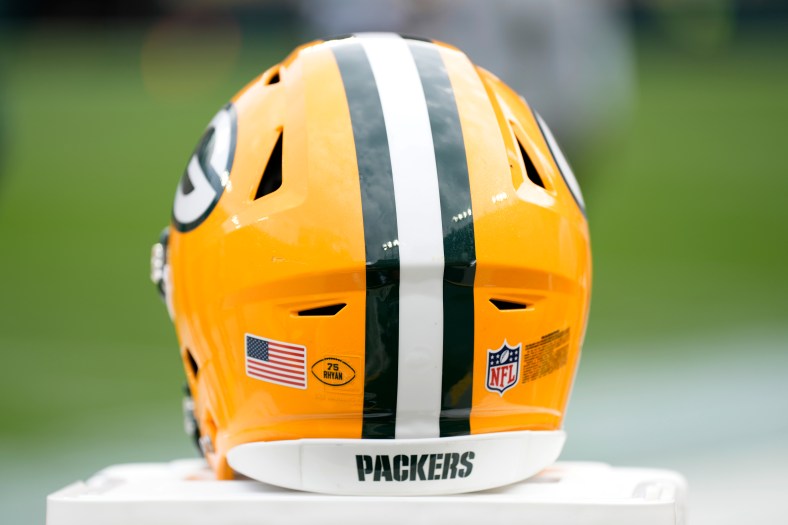
The Green Bay Packers have been eliminated from the NFL playoffs, but the 2023 NFL season must be considered a victory for the franchise. After the youngest roster in the NFL made it to the postseason, the sky is the limit for the Packers’ future.
Green Bay showed flashes of becoming one of the best teams in the NFC in the second half of the regular season. Jordan Love evolved as a more consistent playmaker, all while the weapons around him grew more confident and produced more consistently as they gained experience. With cap space and plenty of draft capital, the 2024 NFL offseason could be a turning point for Green Bay’s future.
Related: Green Bay Packers mock draft 2024
Here are the four offseason moves the Green Bay Packers should make in 2024.
Extend quarterback Jordan Love
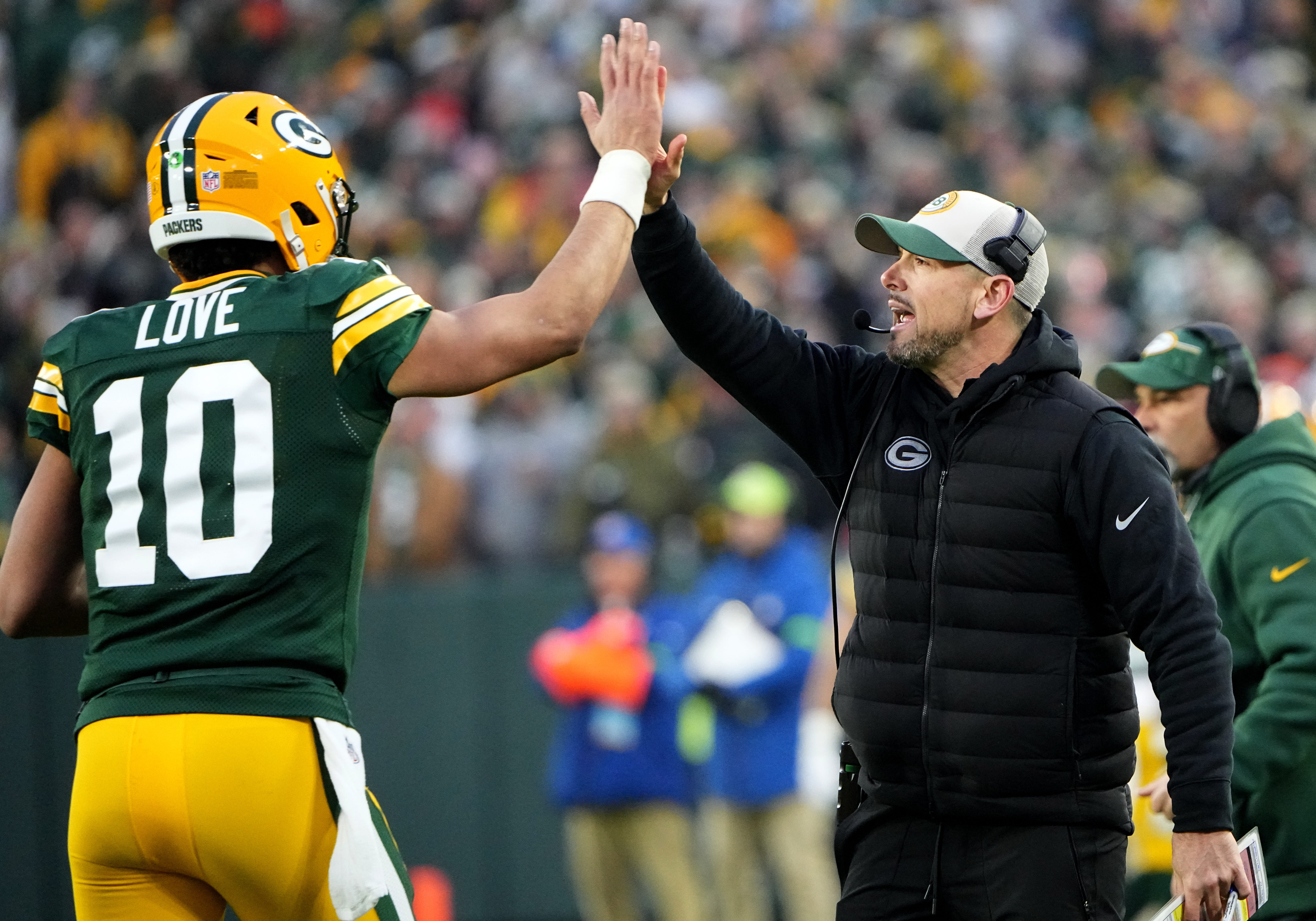
The most important thing to the Packers this season was how quarterback Jordan Love performed. Things looked bleak early, especially following his performance against the Las Vegas Raiders. It seemed like Green Bay missed on its first-round quarterback, creating a dire need heading into 2024. Now, the Packers know they have a quarterback with the tools to be the face of the franchise.
Related: Green Bay Packers draft picks 2024
Because of the one-year extension he signed in 2023, Love doesn’t necessarily need to be extended. Green Bay could let him play out the 2024 season, see what progress he’s made and then extend him before he can hit free agency. However, now feels like the next time to get a short-term deal done with Love.
- Jordan Love contract: $10 million base salary, $12.257 million cap hit in 2024
- Projected Extension: 4 years, $124 million ($10 million in 2024, 3 years, $114 million new deal)
A three-year extension tacked onto his 2024 contract would lower his cap hit next season, with a three-year deal following it at a $38 million average annual value. While that falls behind contracts like the one Daniel Jones signed, Love would be eligible to hit free agency when he’s 29 years old. If he keeps proving himself, Green Bay could extend him again after the 2026 campaign.
Jim Leonhard named Green Bay Packers defensive coordinator
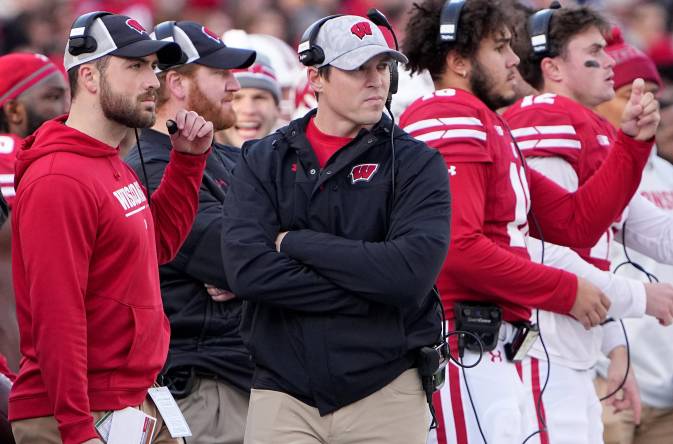
While Green Bay made the playoffs and the defense played well, Packers defensive coordinator Joe Barry has far too often made this unit a letdown. For all the first-round picks and cap space Green Bay has committed to its defense, not even finishing top-20 in key statistics is an awful reflection on Barry. For the Packers to become a Super Bowl contender, they need a new play-caller.
After turning down multiple defensive coordinator gigs at the collegiate level this winter, Jim Leonhard could have opportunities at the next level. While he’s never coached in the NFL, his time as the defensive play-caller for the Wisconsin Badgers more than captures what he’s capable of.
Related: Green Bay Packers defensive coordinator candidates
| PPG | Total YPG | 3rd Down % | Yards per Play | |
| 2017 | 13.9 (2nd) | 262.1 (2nd in FBS) | 29.1% (4th) | 4.2 (3rd in FBS) |
| 2018 | 22.6 (27th) | 344.2 (24th) | 37.43% (48th) | 5.4 (50th) |
| 2019 | 16.9 (8th) | 288.6 (4th) | 27.27% (1st) | 4.6 (6th) |
| 2020 | 17.4 (9th) | 299.9 (4th) | 28.74% (5th) | 4.9 (19th) |
| 2021 | 16.2 (3rd) | 239.7 (1st) | 29.34% (2nd) | 4.0 (1st) |
| 2022 | 21.9 (24th) | 308.6 (9th) | 32.54% (15th) | 4.6 (11th) |
Green Bay needs a more aggressive defense, with a coach willing to make in-game adjustments and who won’t put his corners 10 yards back in coverage. The most important thing for the Packers is replacing Barry with a bonafide defensive guru, but Leonhard is one of the best options.
Create cap space, sign safety Kyle Dugger
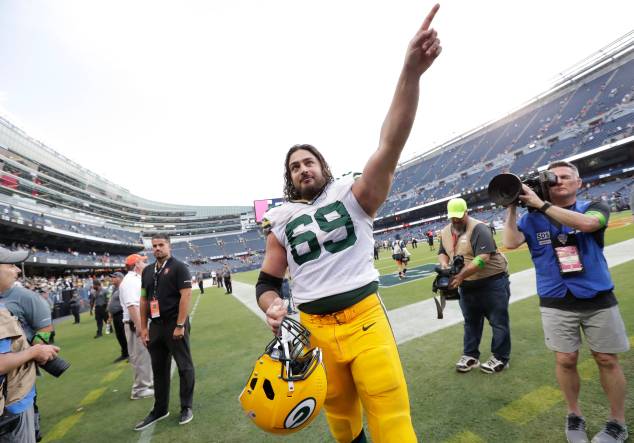
While the Packers ate a majority of Rodgers’ dead cap hit in 2023, they still aren’t in a great cap situation. Without accounting for any cap casualties or contract extensions, Green Bay has less than $6 million of cap space heading into the offseason. Fortunately, there are clear paths to freeing up more than $20 million.
- Green Bay Packers cap space 2024: $5.852 million
| Green Bay Packers player | Cap Savings (Pre-June 1 release) |
| David Bakhtiari | +$21.5 million |
| De’VOndre Campbell | +$10.75 million (post-June 1) |
| Aaron Jones | +$4.815 million (pre-June 1) / +$11.453 million (post-June 1) |
| Preston Smith | +$2.519 million (pre-June 1)/+$12.4 million (post-June 1) |
| Royce Newman | +$1.055 million |
With the created cap space, Green Bay can go out and finally address its need at safety. Someone like All-Pro Antoine Winfield Jr.. is too expensive for the Packers’ front office, but the 2024 free-agent class has other young starters. While there’s a great choice between Kyle Dugger and Kamren Curl, we’ll give the nod to Dugger joining the Packers’ secondary.
Among safeties who played 250-plus snaps this past season, per PFF, Dugger posted the eighth-highest run defense grade (79.6). In addition to making stops near the line of scrimmage and flying in to prevent first downs, Dugger is also reliable in coverage. In his age-27 season, Dugger allowed just 9.8 yards per reception with 2 interceptions and an 88.4 QB rating allowed when targeted. Signing Duggar allows Green Bay to take another safety later in the 2024 NFL Draft, rather than having to reach for one.
Green Bay Packers projected mock draft
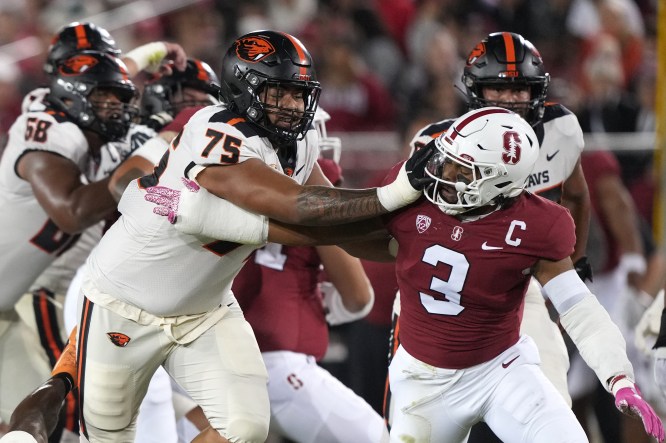
With those moves behind us, our focus turns to a Green Bay Packers mock draft. Thanks to the Aaron Rodgers and Rasul Douglas trades, Green Bay is flush with draft picks. It allows the front office to keep building this team’s foundation, establishing a roster that can contend for years to come.
With so much draft capital in the 2024 NFL Draft, general manager Brian Gutekunst will have the flexibility to be aggressive on draft night. It could mean either trading up in Round 1 or moving up to acquire another first-round pick. For this, we explored one of those scenarios.
- 1st Round, 12th overall: Taliese Fuaga, OT, Oregon State Beavers
- 2nd Round, 41st overall: T.J. Tampa, CB, Iowa State Cyclones
- 2nd Round, 57th overall: Kris Jenkins, iDL, Michigan Wolverines
- 3rd Round, 88th Overall: Tykee Smith, S, Georgia Bulldogs
- 4th Round, 125th overall: Drake Nugent, iOL, Michigan Wolverines
- 6th Round, 203rd overall: Will Shipley, RB, Clemson Tigers
- 6t Round, 217th overall: Jordan Magee, LB, Temple Owls
- 6th Round, 219th overall: Layden Robinson, iOL, Texas A&M Aggies
- 7th Round, 246th overall: Nathaniel Watson, LB, Mississippi State Bulldogs
After packaging the 24th, 92nd and 119th overall picks, Green Bay moves up to No. 12 overall. It allows the Packers to move up for left tackle Taliese Fuaga, filling the void left by Bakhtiari’s departure. While Fuaga stands out most as a run blocker thanks to his physicality, he didn’t alow a single sack in over 700 pass-blocking snaps over the last two seasons, all while earning a 90.9 run-blocking grade.
Next, with two lost years from Eric Stokes casting doubt on the Packers’ secondary, we find a potential replacement. Iowa State cornerback T.J. Tampa has the size (6-foot-2) and man coverage skills that Green Bay looks for at cornerback. He also allowed just a 51 percent completion rate last season and allowed a sub-71 QB rating in two consecutive years. Rounding things out, Michigan Wolverines defensive lineman Kris Jenkins – eighth-highest run stop rate (12.6%) in CFB – fills a need in the middle of Green Bay’s defensive line.
